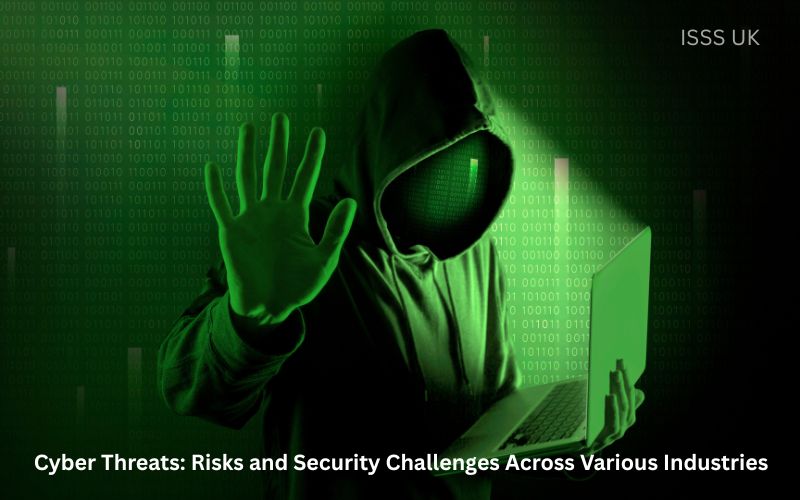Cyber threats present significant risks and security challenges across all industries, but their impact and prevalence vary depending on sector-specific vulnerabilities, data sensitivity, and technological adoption. Below is an overview of the main cyber threats and how they affect different industries in 2025.
Key Cyber Threats in 2025
- Ransomware:
Ransomware attacks are escalating in both frequency and sophistication, with an 81% year-over-year increase from 2023 to 2024. These attacks encrypt critical data, demanding payment for its release, and are particularly devastating for organizations that rely on continuous access to their systems. - AI-Powered Attacks:
Cybercriminals are leveraging artificial intelligence to automate and enhance attacks, making them harder to detect. AI is used to craft convincing phishing emails, automate vulnerability scanning, and adapt tactics in real time. - Deepfake and Social Engineering:
Deepfake technology is being used to create realistic fake videos, images, or audio for impersonation and fraud. Social engineering attacks, especially those using deepfakes, exploit human psychology to trick employees into revealing sensitive information or transferring funds. - Malware:
Malware remains a pervasive threat, with over 1.2 billion malware programs in existence. New variants, including AI-enhanced malware, fileless malware, and worms, continue to evolve and evade traditional defenses. - Phishing:
Phishing attacks, often leveraging sophisticated impersonation and deepfake technology, are a primary method for gaining unauthorized access to sensitive data. Phishing attempts rose by 58.2% in 2023, with the finance industry being the most targeted. - Supply Chain Attacks:
Attackers target third-party vendors or software suppliers to compromise multiple organizations downstream. Supply chain attacks increased by 431% between 2021 and 2023, and are expected to continue rising. - Cloud and Container Vulnerabilities:
As organizations adopt cloud-native technologies and containers, misconfigurations and unpatched images create new attack surfaces. Attackers can pivot from a single infected container to the main environment, exfiltrating data or injecting malicious code. - DDoS Attacks:
Distributed Denial-of-Service (DDoS) attacks overwhelm servers with traffic, causing system downtime and disrupting operations. DDoS attacks increased by 13% in the first half of 2024. - Cryptojacking:
Cryptojacking hijacks computer resources to mine cryptocurrency, often going unnoticed but degrading system performance.
Industry-Specific Risks and Challenges
| Industry | Key Threats & Challenges | Notable Trends & Stats |
| Manufacturing | Ransomware, supply chain attacks, malware | 25% of all cyberattacks in 2023; APAC most affected |
| Banking & Finance | Phishing, ransomware, data breaches, cyber-enabled fraud | Most targeted sector for phishing; 18.2% of attacks |
| Professional Services | Data breaches, phishing, social engineering | 15% of all cyberattacks; sensitive client data |
| Energy | Data breaches, hacking, extortion, ransomware | 11% of cyber incidents in 2023; disruptions common |
| Healthcare | Ransomware, data breaches, supply chain attacks | Critical infrastructure targeted; patient data at risk |
| Technology/IT | Cloud vulnerabilities, supply chain attacks, AI-powered threats | Cloud misconfigurations and container risks |
Security Challenges Across Industries
- Human Factor:
Social engineering and phishing rely on exploiting human error, making employee awareness and training critical. - Supply Chain Complexity:
Third-party risks are increasing, requiring rigorous vetting and continuous monitoring of partners. - Technological Evolution:
Rapid adoption of AI, cloud, and IoT introduces new vulnerabilities and attack vectors. - Regulatory and Compliance Pressure:
Industries handling sensitive data face strict regulatory requirements, making compliance a key challenge.
Conclusion
Cyber threats are evolving rapidly, with ransomware, AI-powered attacks, deepfakes, supply chain compromises, and cloud vulnerabilities posing significant risks across all sectors. Each industry faces unique challenges based on its data, infrastructure, and regulatory environment, but all must prioritize proactive security measures, continuous monitoring, and employee training to mitigate these threats.





